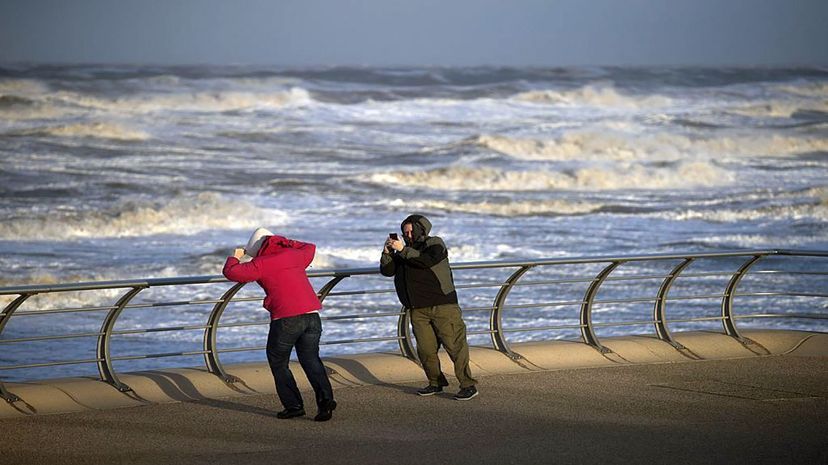
In early March 2017, a 4-year-old Ohio girl named Madison Gardner had just returned home with her mother Brittany from a shopping trip. As her mom was unloading the car, Madison walked up the front stoop to enter the house. She grabbed the door handle, turned the knob, and then suddenly went for ride.
Like the tornado that swept Dorothy and Toto to Oz, a gale blew Madison's front door open, turning it into a sail with the tiny tot hanging on for dear life. Madison wasn't hurt, but the episode proves that yes, the wind can send a person off their feet and even knock them down.
Advertisement
But how? Let's start with some basic science: The wind is always blowing. It can be as calm as a warm summer's breeze, or as destructive as a those that blow in the strongest hurricane. Wind blows because of pressure differences in the atmosphere. The sun hits parts of the planet at different angles, warming Earth's atmosphere unevenly. As result, some places are warmer than others.
Because of this uneven temperature, the gases in the atmosphere start to "dance." Where the air temperature is hotter, air molecules expand and move upward, creating low air pressure. On the other hand, cold air temperatures press air molecules together, causing them to sink, creating high air pressure. When these molecules flow from high pressure areas to low pressure areas — hang on to your hat, or as Madison abruptly learned, the door handle. The wind can blow, sometimes violently.
Meteorologists use the Beaufort Wind Scale to measure the force of wind. The scale starts at 0, which is a calm breeze, and ends at 12, which is hurricane-force wind that speeds along at more than 64 miles per hour (102.9 kilometers per hour). Still, at what point can wind move a person? It depends on a lot of things, according to Kait Parker, a meteorologist at the Weather Channel.
The formula has to take into consideration variables: the velocity of wind; the effect of gravity (the force of attraction between a person and Earth); static friction (the force that keeps a person anchored to the ground); and drag from the wind, which is the opposing force of static friction. "You'd also have to take into account the density of the air," Parker says. "Is it super-moist or heavy? Is it dry? Is it lighter?"
A person's mass and center of gravity also need to be factored. For instance, little Madison didn't have much mass (or much of a center of gravity, for that matter), so the wind easily took her for a ride. The wind would have had to blow much harder to lift her mom off her feet.
"If you are a larger person, or a heavier person, it would take a lot more force to knock you off your feet," Parker says. "For a person who weighs 100 pounds (45.3 kilograms), it would take a wind speed of 40 to 45 miles an hour, or tropical storm force, to move them."
Advertisement


